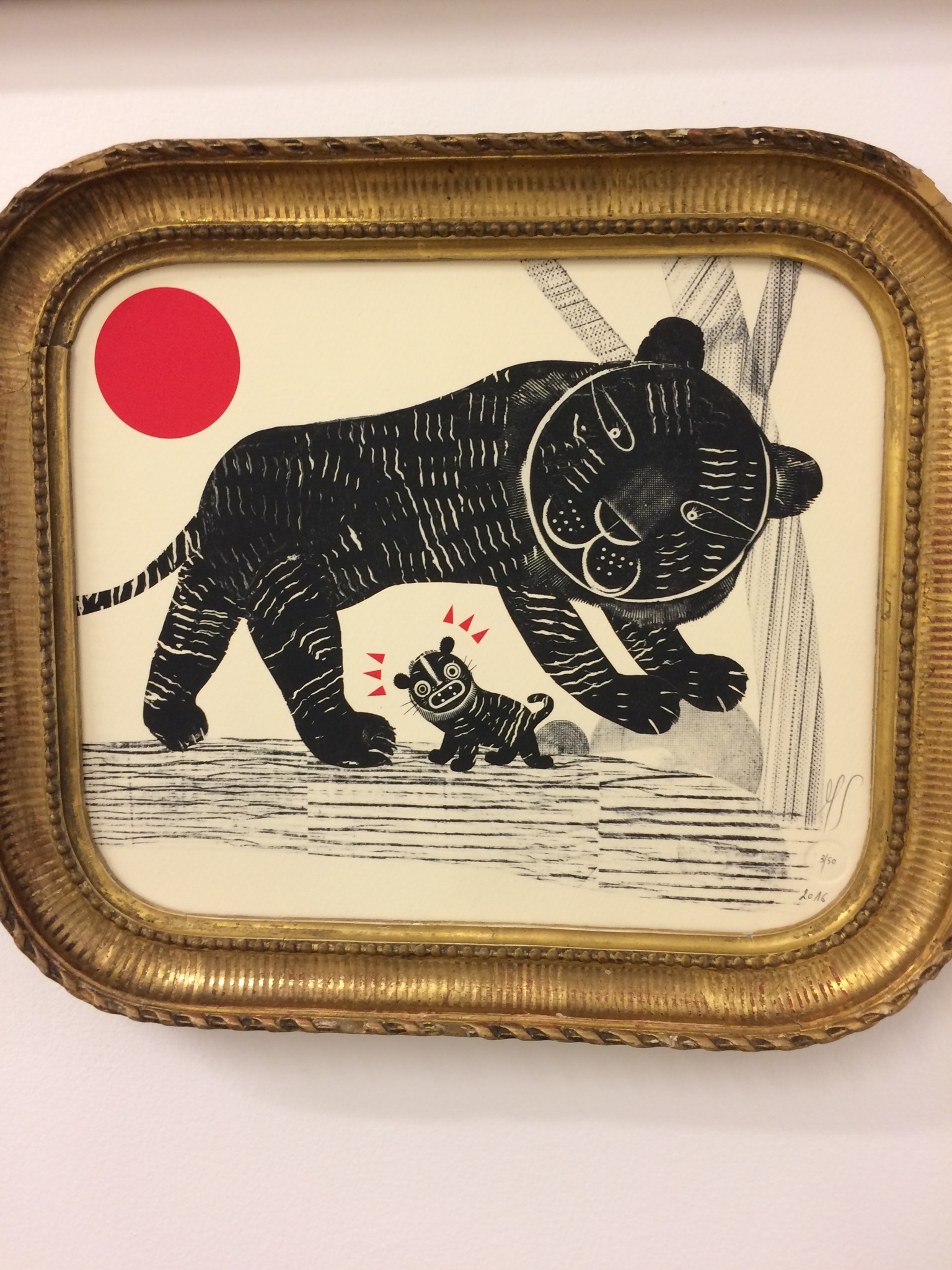
Photo credit: Gabriella Radujko. "Trunk to Trunklet" Illustrator: Mandana Sadat; Author: Jorge Luján; Medium: ink, collage, digital; Publisher: Enchanted Lion Books
The illustrations found in children’s picture books are the subject of the annual exhibition of The Original Art, no doubt so named because it describes not only the exhibition of original artwork but also the first art a child sees. Cross referencing illustrations from 132 picture books with copies of the corresponding books in metal racks in the center of the first floor gallery at the Society of Illustrators, through December 2016, makes for a unique, interactive experience.
The show is a testament to how adults and children long to be in the presence of special things. Visitors will invariably wonder why our regard for this art form, groundbreaking when it first appeared in the early 20th Century, perennially persists beyond childhood, with great affection and sentimentality.
Picture books appear to be quite powerful, physically connecting us to the real world as much as imaginary ones through visual literacy. They synthesize emotions, organize information and give young and young adult readers the courage they need to handle their ever-changing lives. At the same time, they remind us of art’s role in our early lives as children.
In The Story of Mankind, artist/illustrator Hendrik Willem van Loon writes that the first five years of a child’s life are mainly devoted to art, with music, in the form of cooing, as his/her first contribution. Later, mud-pies become sculpture, with painting following with the use of chalk, paint and paper in exploration of the basic elements of shape which include the dot and circle family and the line family.
The role of art and the corresponding behavior of art making in human life, as described by scholar Ellen Dissanayake in Homo Aestheticus: Where Art Comes From and Why reaches even further back in human history when we “began deliberately to set out to make things special or extraordinary.” Dissanayake suggests that “making special” actually contributed to our survival as a species.
She also describes how art and ritual have much in common. Both, she claims, are compelling, capturing and holding our attention; both affect us emotionally, bringing feelings into awareness. They are deliberately nonordinary, stylized and “bracketed off” from real life.
Also, the activities of embellishing, patterning, juxtaposing, shaping and transforming while making art, which are described as part of her provocative argument, are very much on display in the stunning range of media and techniques used by the show’s artists. These include acrylic and oil on paper, scratchboard and watercolor, watercolor and digital, gouache, pen-and-ink, collage, mixed-media, cut paper, etc., in a coherently curated show with a full color catalog.
Suggestions that we begin our lives as artists and grow up to “make special” to enhance our lives may be two important clues as to why a show about children’s book illustration will reward anyone who continues to appreciate the magic of children’s picture books.

 RSS
RSS
